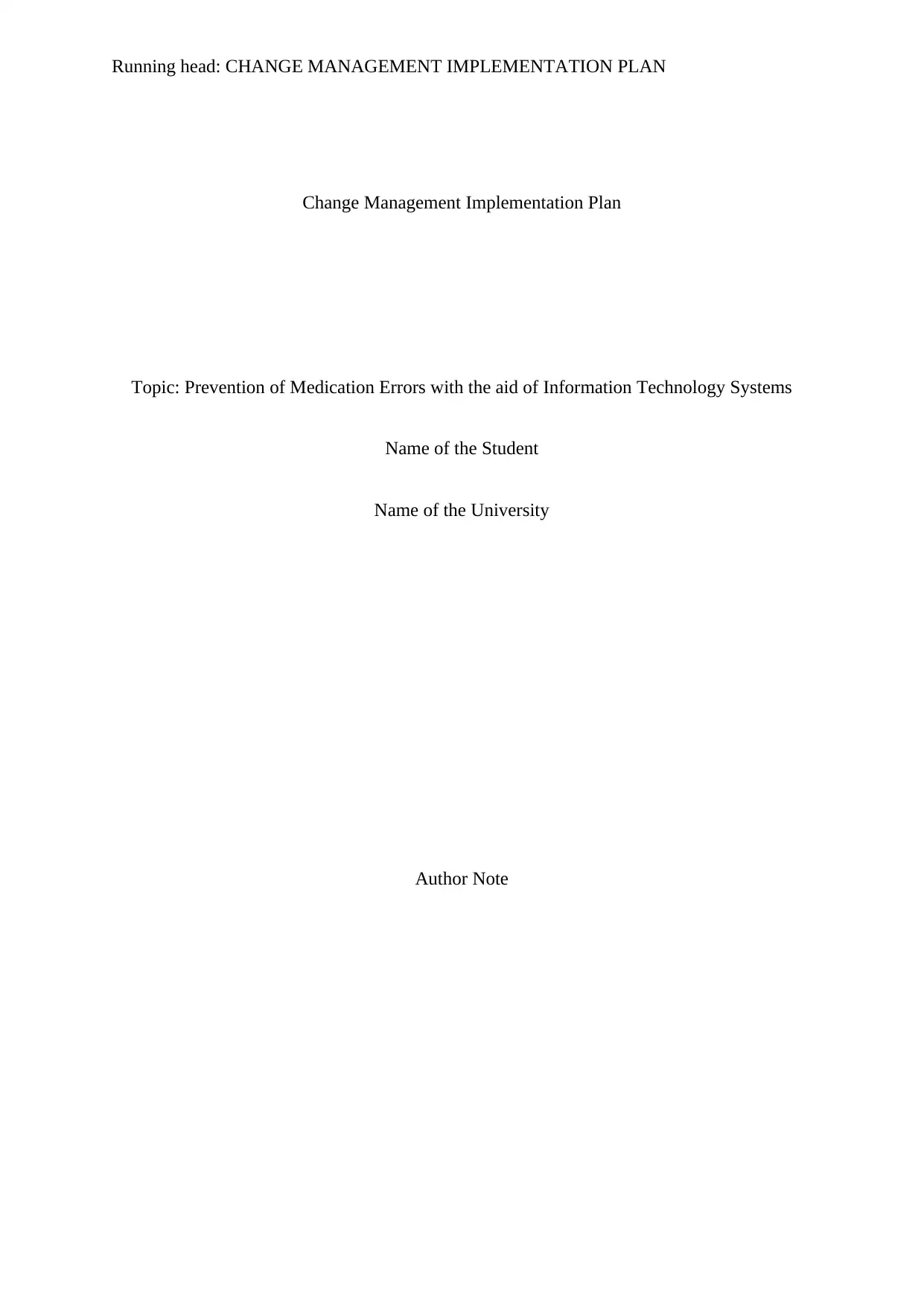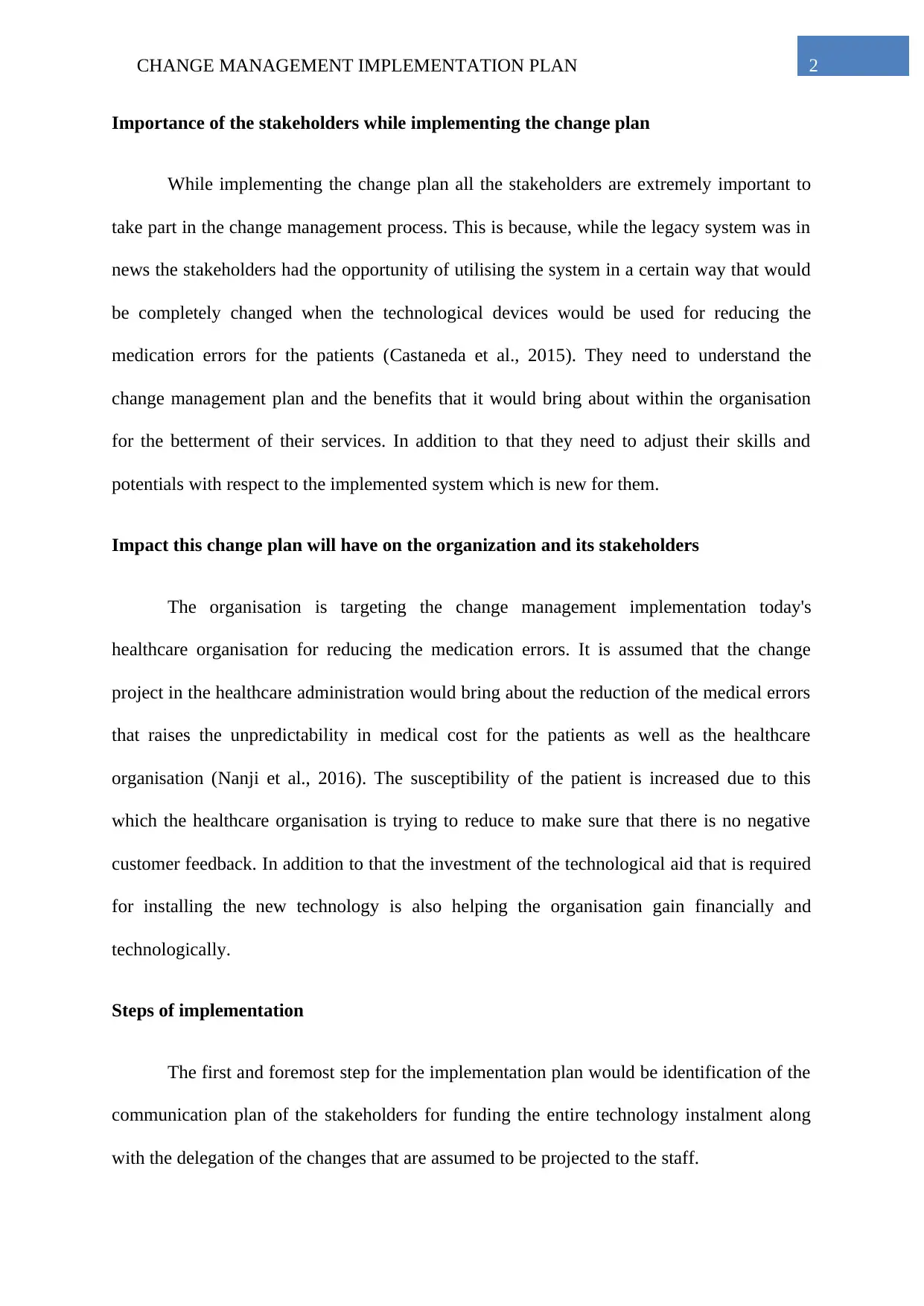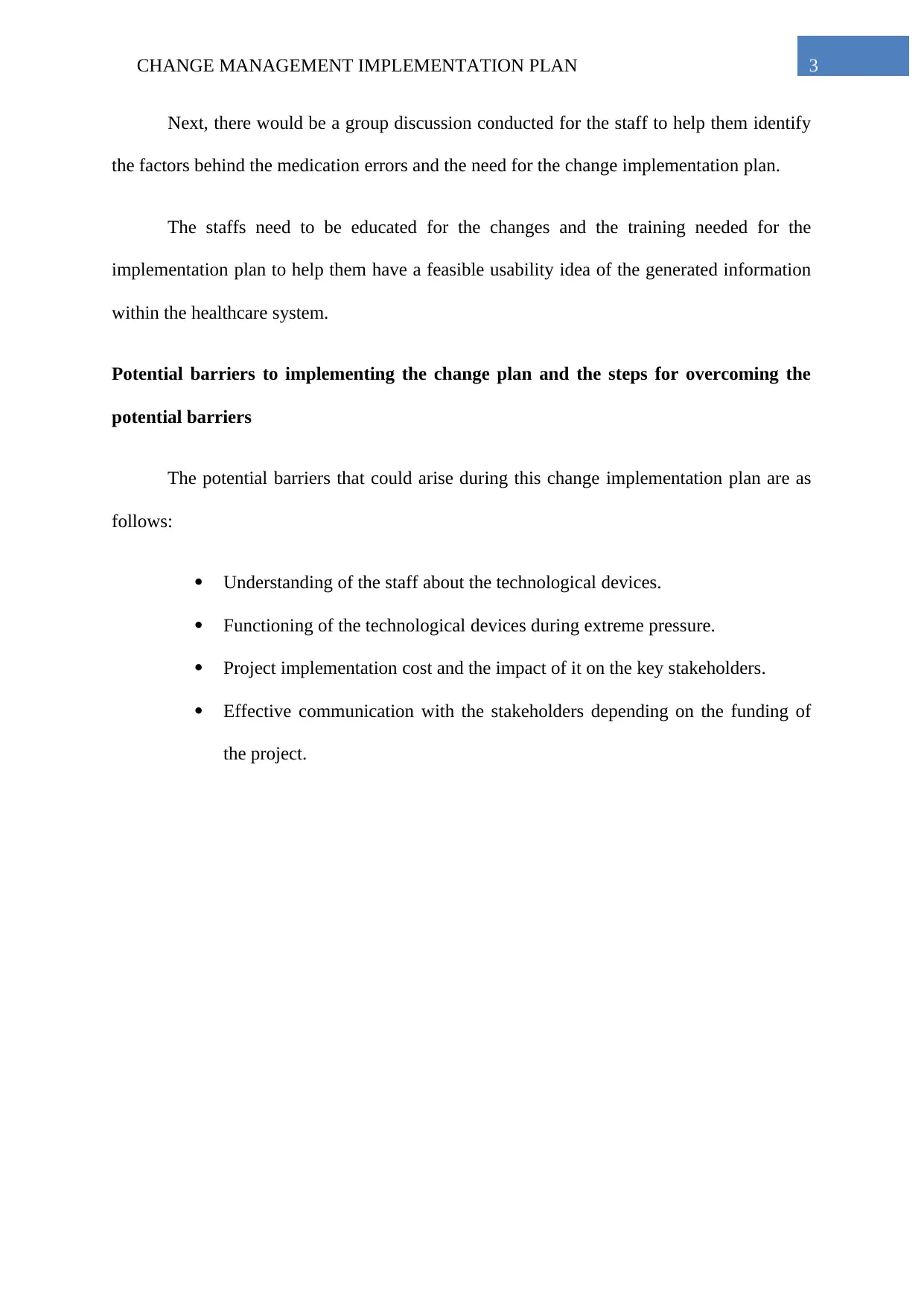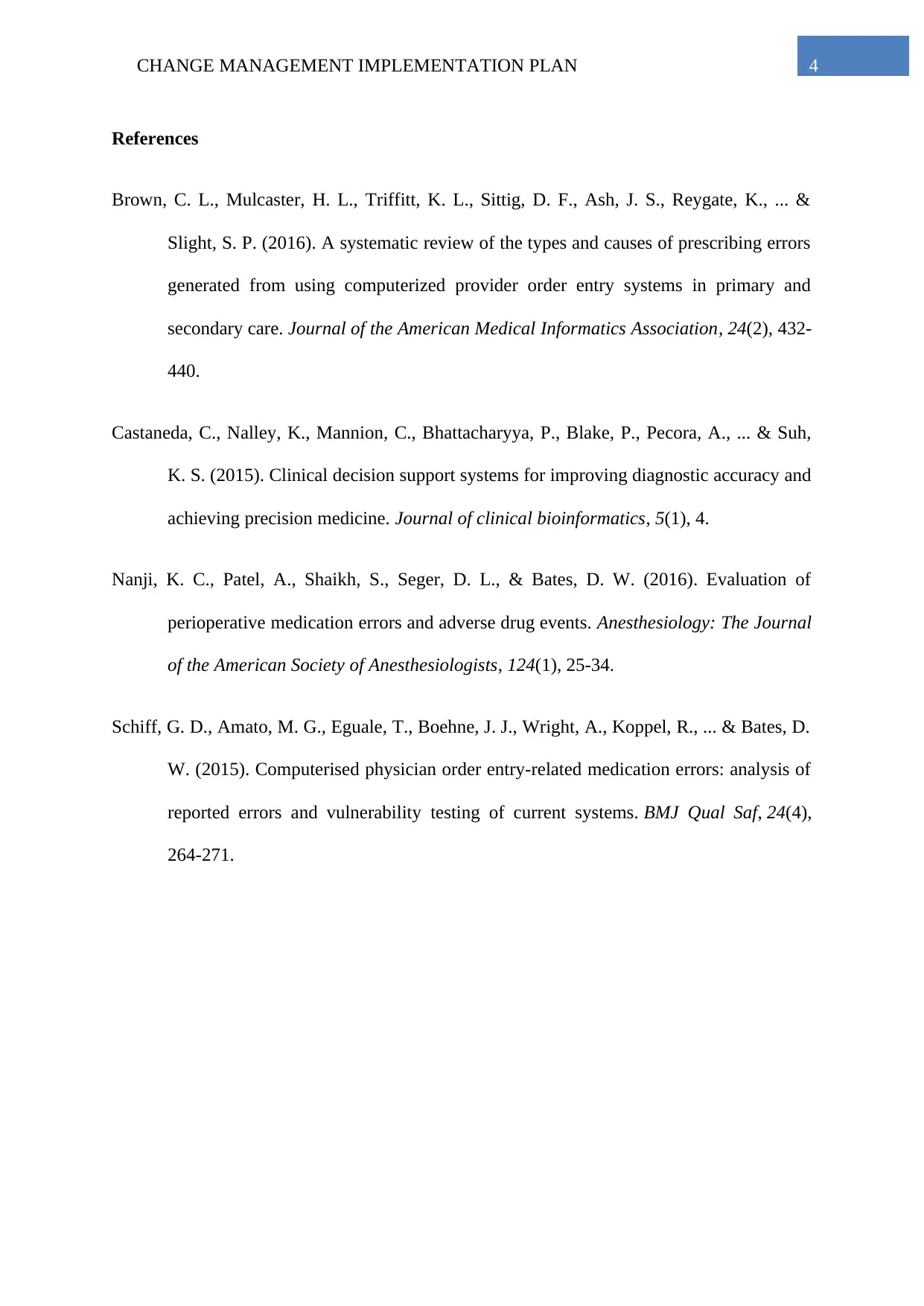Change Management Implementation Plan for Medication Errors Prevention
VerifiedAdded on 2023/04/26
|5
|1033
|352
Report
AI Summary
This report presents a change management implementation plan aimed at preventing medication errors within a healthcare setting through the integration of information technology systems. It begins by identifying the necessary organizational resources, including a dedicated staff team and financial investments in technological devices. The report then outlines the key stakeholders involved, such as IT firms and community health centers, as well as the importance of their collaboration and understanding of the new system. The impact of the change plan on the organization and its stakeholders is discussed, highlighting the potential reduction in medical errors and associated costs, and the importance of staff training and skill adaptation. The implementation steps include stakeholder communication, staff education on medication errors, and training on the new IT systems. Potential barriers, such as staff understanding of the technology, system functionality under pressure, project costs, and stakeholder communication, are also addressed. The report concludes with a discussion of the project's outcomes, including the formation of a medication administration staff, the installment of healthcare IT, improved staff knowledge, and ultimately, the prevention of medication errors. The report emphasizes the importance of stakeholder engagement, staff training, and careful implementation to ensure the successful adoption of the new technologies and achieve the desired outcomes.
1 out of 5












![[object Object]](/_next/static/media/star-bottom.7253800d.svg)